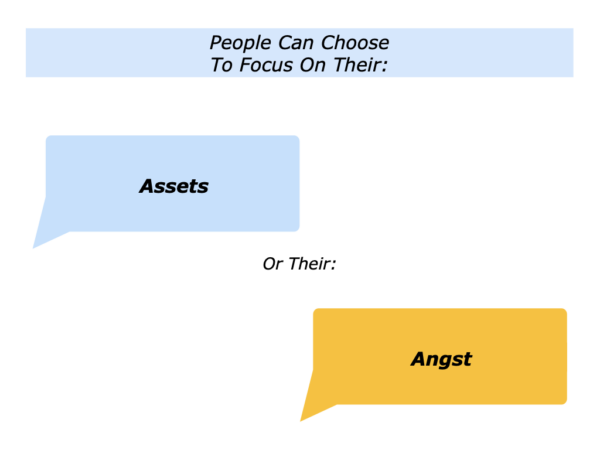
People can choose their attitude in life. They can, for example, choose to focus on the assets approach or the angst approach. The choice they make has consequences – both for themselves and for other people.
People who take the assets approach often focus on the things they do have rather than those they don’t have. They count their blessings rather than their burdens. Alexander Calder, the sculptor, said: “I had the good fortune to be born happy.”
That is a great start in life, but each of us have many kinds of assets. People who are happy often have a sense of gratitude. They count their blessings rather than count their burdens.
Brother David Steindl-Rast is known for his work on gratefulness. He writes:
“People want joy, they don’t want things … The root of joy is gratefulness. It is not joy that makes us grateful; it is gratitude that makes us joyful.
“Gratefulness is the key to a happy life that we hold in our hands, because if we are not grateful, then no matter how much we have we will not be happy – because we will always want to have something else or something more.”
People who take the angst approach sometimes focus on what they don’t have. Some become anxious. Falling into a spiral, they worry about that they can’t control rather than focus on what they can control.
Some people who take the angst approach express their feelings in other ways. Comparing themselves to others, they become jealous and consumed by avarice. Sometimes they try to ease their inner pain by acting big whilst trying to make others look small.
Looking back on your life, can you think of a time when you took the assets approach? This could have been in your personal or professional life.
You may have done this when tackling a tough challenge. You may have spent time with your loved ones, regained your energy and harnessed your resources. You then used your creativity to find solutions to challenges and work towards achieving success.
You may have done this when leading a company during a recession. Building on the company’s strengths, you may have spent time with customers. You then did superb work which produced wins for the customers and wins for the company. This led to building a stronger base for your business.
If you wish, try tackling the exercise on this theme. This invites you to do the following things.
Describe a specific situation in the past when you chose to follow the assets approach rather than the angst approach.
Describe the specific things you did then to follow the assets approach.
Describe the specific things that happened as a result of following this approach.
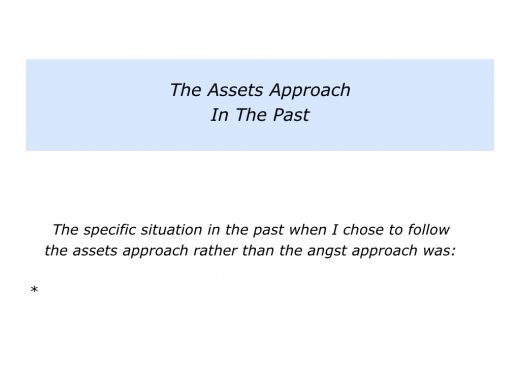
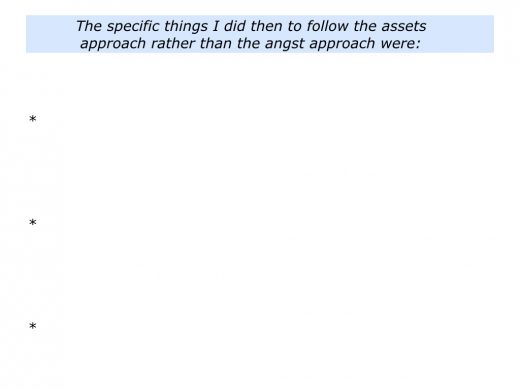
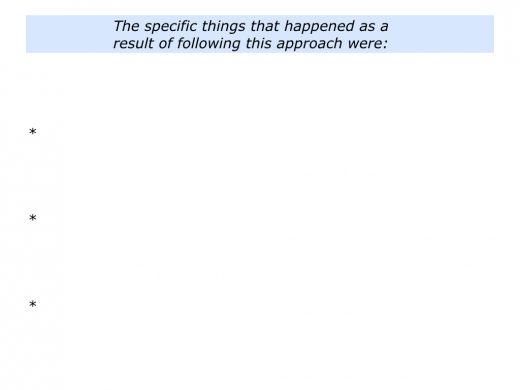
There are many ways to take the assets route. The following sections explore practical ways you can build on your assets and, if appropriate, help other people to build on their assets.
Building On Your Assets
During my early career I worked in places for people who had physical or other disabilities. Virtually all of these centres had the same philosophy. This was:
We build on people’s abilities and what they can do.
We also provide them with strategies they can use to deal with challenges they find more difficult to do.
This was an approach I found mirrored in some schools, sports teams and organisations. They encouraged people to build on their strengths whilst also finding ways to deal with the consequences of any weaknesses.
This approach led to me running strengths coaching programmes from 1974 onwards. It also influenced the approach I took to mentoring. Here is one example.
Several ago I had a session with Dave, a manager who was normally positive, but on that occasion he felt depressed in his job. Feeling the world was dark, he had fallen into a negative spiral.
Bearing this in mind, I invited him to do the exercise called My Assets. This invited him to clarify and build on his personal and professional assets.
Within 30 minutes Dave had turned himself around. He aimed to tackle the challenges at work but also appreciate his true wealth every day. He explained this in the following way.
I have good health, a fantastic wife and two lovely children. We have good friends, a home, a garden and a bit of money in the bank.
I also have a lot of drive, energy and skills that can help companies to improve. I need to get out and give to people in my network, because this could lead to other opportunities.
Certainly I must tackle the issue at work. But it is solvable, even if it means moving to a new job. Sometimes I have the occasional sulk, but I can limit that to 10 minutes. I can then get my act together and try to succeed.
Today it has been good to take stock of my assets. Maybe it would also be good for me to sit down with my wife and do a similar exercise. We can build on what we have and plan our next move forward.
Imagine that you want to take a similar approach in your own life and work. How can you appreciate and build on your assets?
What are your personal assets? You may have a positive attitude, a strong drive and a good imagination. You may have reasonable health, a caring family and encouraging friends. You may be resilient, focused and able to find creative solutions to challenges. You may also have some finances and other assets.
What are your professional assets? You may have particular strengths, skills and the ability to do strategic thinking. You may be good at working with certain kinds of customers and helping people to succeed. You may also have a wide professional network of people of friends, customers and potential employers.
If you wish, try tackling the exercise on this theme. This invites you to do the following things.
Describe your personal and professional assets.
Describe the specific things you can do to keep building on your personal and professional assets.
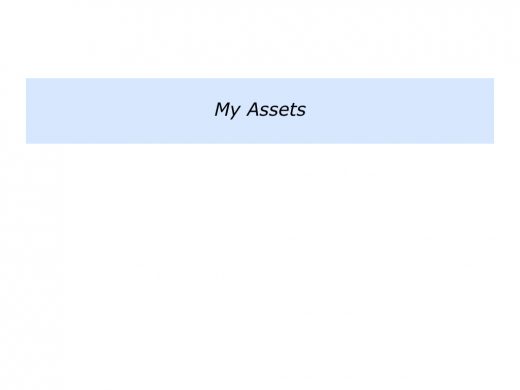
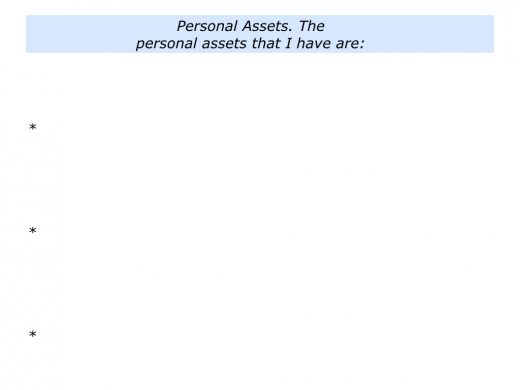
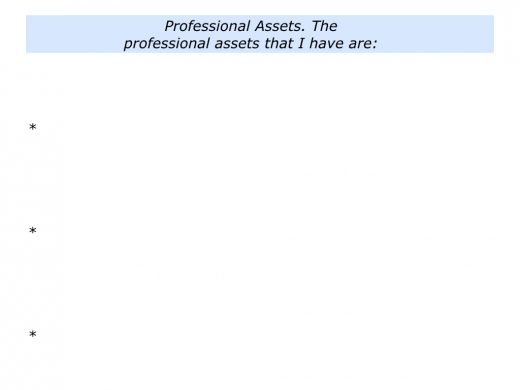
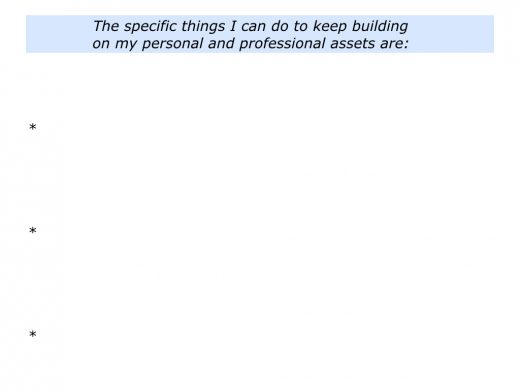
Helping People To
Build On Their Assets
Imagine that you want to help other people to build on their assets. You may want to do this in your role as a parent, partner or friend. You may also do this when acting as an educator, mentor, leader, trusted advisor or in another professional role.
Sometimes it can be harder to do this with loved ones and friends, because you don’t want to be seen as trying to do therapy. The best way to help people close to you may be by simply being a good encourager.
How to take this step? One approach is to be kind and help people to feel at ease. When appropriate, you may also want to encourage them to follow some of the principles that people follow to be happy.
The Happiness Approach
During the past 30 years there have been many studies of people who live happy and fulfilling lives. These have been described by writers such as Martin Seligman, Sonja Lyubomirsky, Barbara Fredrickson, Tal Ben-Shahar, Mihaly Csikszentmihalyi, Richard Leider and many others.
These studies originally focused on happiness, but some researchers found this term to be misleading. They found that happiness was in fact a by-product of living a meaningful life.
Bearing this in mind, here are some of the themes that have been highlighted in these books. If appropriate, you can encourage people to follow some of these principles in their own ways.
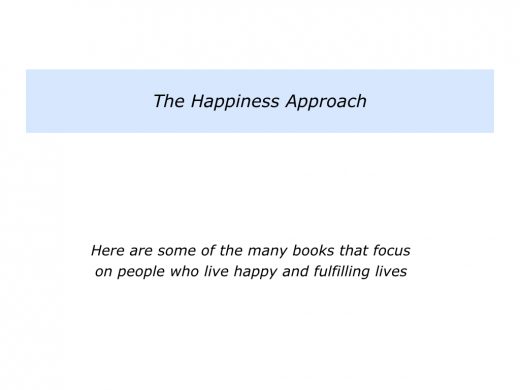
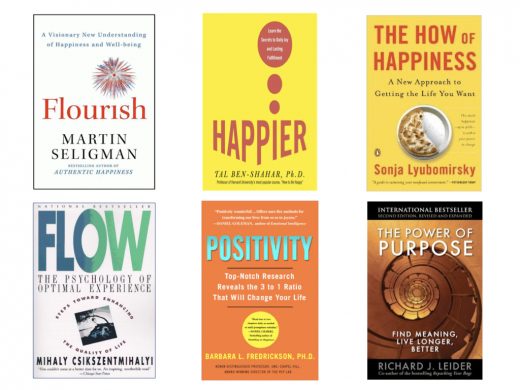
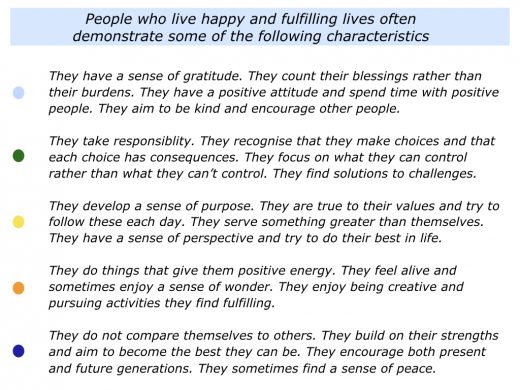
The Strengths Approach
This is another way to help a person to build on their assets. It is to encourage them to build on their strengths and manage the consequences of any weaknesses.
Some of the pioneering work on this approach was done by Bernard Haldane and Don Clifton. It has since been developed by practitioners such as Tom Rath, Peter Benson, Alex Linley, Paul Brewerton and James Brook.
David Cooperrider and Diana Whitney showed how the strengths approach can work for people, team and organisations in their book Appreciative Inquiry. This approach studies humanity at its best. It invites people to focus on:
The specific times when they have performed brilliantly in the past;
The specific principles they followed then to perform brilliantly;
The specific things they can do to follow these principles – plus add other skills – to perform brilliantly in the future.
Below are some of the books that highlight the principles that people often follow to build on their strengths. When appropriate, you can encourage people to follow these principles in their own ways to build on their assets.
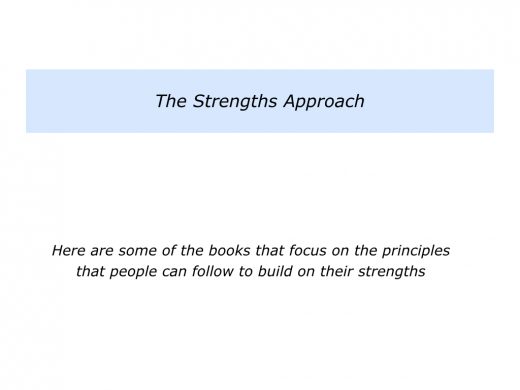
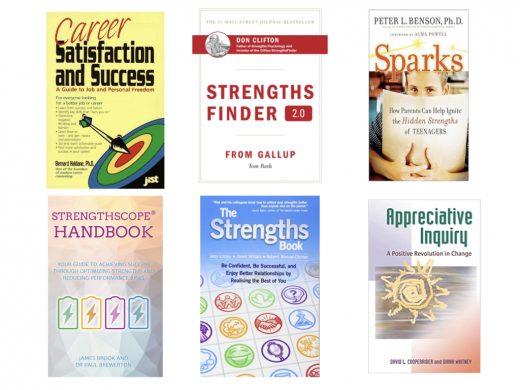
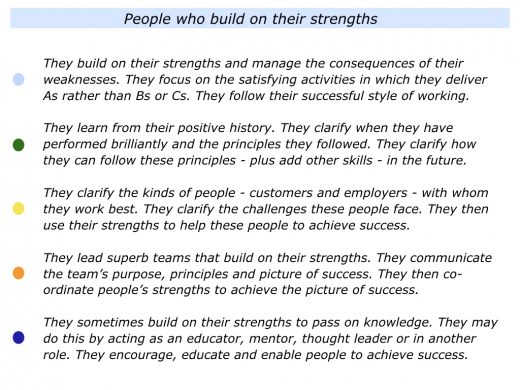
The Highly Sensitive Person Approach
Let’s explore one of the toughest challenges when helping people to deal with angst. This involves helping a highly sensitive person who can feel overwhelmed by certain experiences.
Everybody is open to the sounds, sights and sensations they experience each day. As Elaine Aron explained in her book The Highly Sensitive Person, however, some people can be deeply affected by certain physical events.
Here I am using the term highly sensitive in a wider sense. Many people are, for example, highly sensitive on a values level. They have difficulty if they see certain values being violated.
If a person cares deeply about people and the planet, for example, they can sometimes feel overwhelmed by bad news and difficult events. This can lead to depression.
Great workers are often sensitive in a particular field. This has both pluses and minuses. They often use their sensitivity to do fine work. But sometimes it can lead to them feeling upset.
How to help a highly sensitive person to apply their strengths and stay healthy? One of the keys is to provide them with practical tools they can use to take control.
They can learn how to manage their emotions rather than let their emotions manage them. Being open to experiences, they can put themselves into positive rather than negative situations. They can also learn how to manage their personality rather than change their personality.
The following section describes some of the steps that sensitive people can take to apply their strengths and stay healthy. People can also find many excellent tips on self-help websites that help them to manage difficult emotions. Here is a link to one such website.
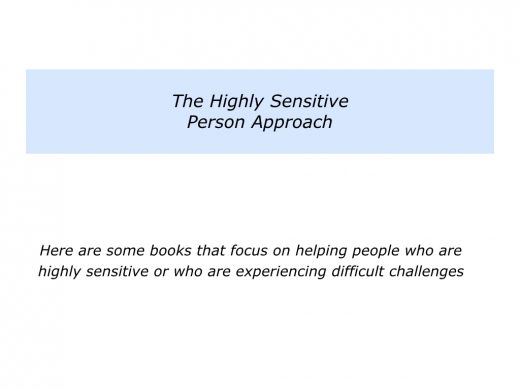
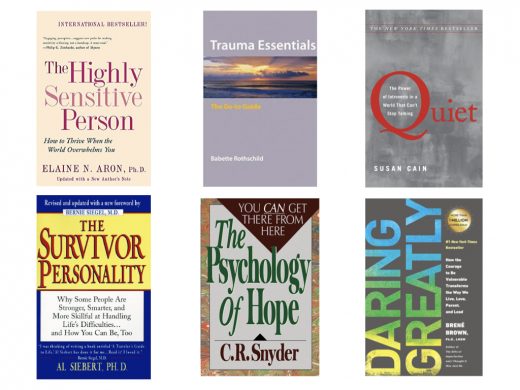
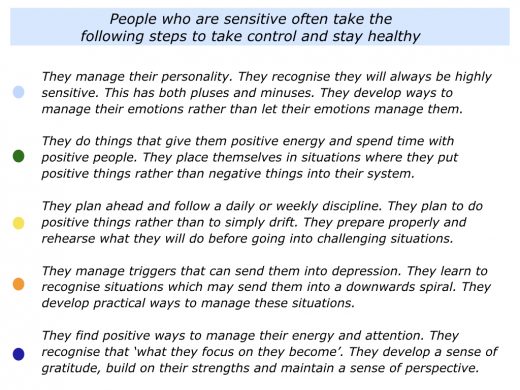
Let’s return to your own life and work. Looking ahead, can you think of a situation when you may want to take the assets approach? This could be in your personal or professional life.
You may want to build on your assets when helping a person, making a transition or dealing with a difficult emotion. You may want to do so when developing a sense of purpose, leading a team or tackling a tough challenge.
What can you do then to clarify your assets? How can you build on these strengths? How can you add any skills or get the required support? How can you do your personal best in the situation? What may happen as a result?
If you wish, try tackling the exercise on this theme. This invites you to do the following things.
Describe a specific situation in the future when you may want to follow the assets approach rather than the angst approach.
Describe the specific things you can do then to follow the assets approach.
Describe the specific things that may happen as a result of following this approach.
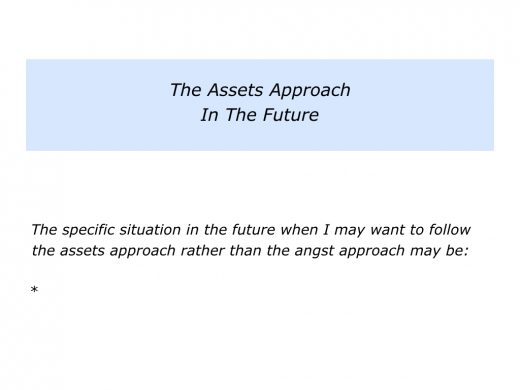
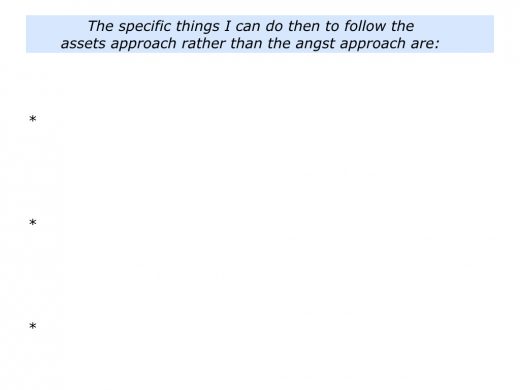
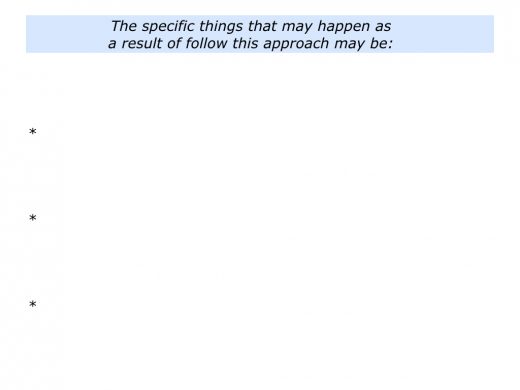






Leave a Reply